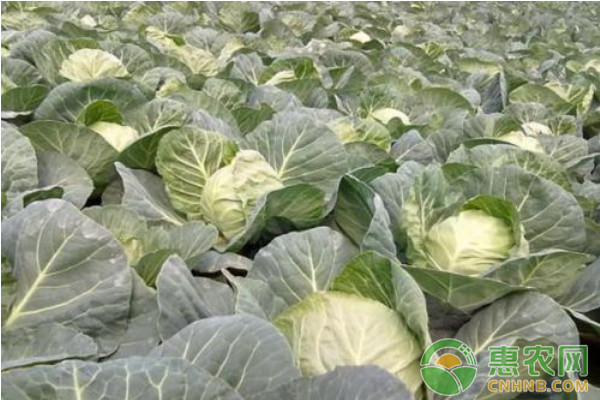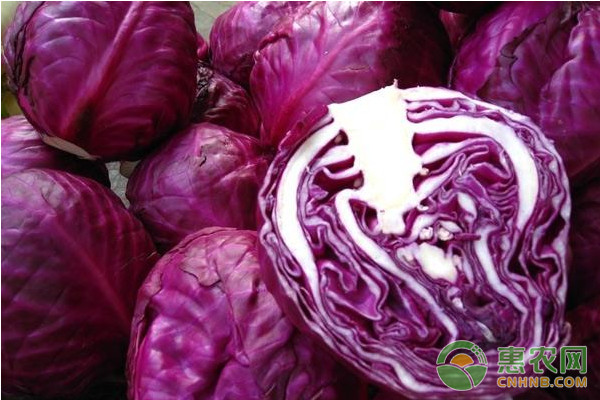Key points of high-yield cultivation techniques of cabbage in South China
Cabbage is a very delicious vegetable with high nutritional value. Cabbage is a cool climate with strong cold and heat resistance, strong growth and easy cultivation. It is easy to achieve the purpose of annual supply. At present, the area of ​​Chinese cabbage has reached 253,000 hm2 (excluding Taiwan), accounting for 25%-30% of the national vegetable area. Among them, cabbage in the south (the Yangtze River Basin and the south) is 164,000 hm2, accounting for the national cabbage. 64.3% of the area. How is cabbage grown? Let's take a look at the key points of the cabbage planting technology in South China.

First, the variety selection
The planting of cabbage in the high temperature and rainy season in South China should be high ridge and timely drainage in the field. In addition, due to the serious erosion of rainwater, the soil fertility is easy to be lost. It is required that the cabbage varieties have strong tolerance to barren and high yield. According to the sowing time: from mid-August to early October, early-maturing varieties with heat and rain resistance should be selected, such as the early-maturing round green 374.
In the beginning of October to mid-November, in order to save labor and labor, it is advisable to use medium-maturing varieties that are resistant to barren, disease-resistant and high-yield, such as the medium-cooked ball Gegan 250.
From mid-December to late-January, with the decrease of temperature, first select the varieties of cabbage with strong cold tolerance and fast blasting at low temperature, such as the large spherical, color green precocious cabbage - Jiegan 1565.
Second, planting technology
In the spring of 2017, the low temperature lasts for a long time, and the climate is repeated. The cruciferous radish, cabbage, etc. are very easy to smoke, and the climate is uncertain. It is king to choose a variety that is adaptable!
1, seeding seedlings
The sowing period of summer and autumn cabbage is long, and the planting in August-September is vulnerable to high temperature and heavy rain. In order to cultivate strong seedlings, it is generally necessary to use the shade shed to raise seedlings. Over-winter cultivation in South China also needs timely sowing to avoid the early convulsion of the green body. It is recommended that the harvest period be counted at the time of planting, and the vegetable stalls should be properly staggered.
2, the whole planting
Deeply plough the land before planting and apply the base fertilizer. Each acre can be applied with 4000kg of high-quality farmyard manure and 50kg of phosphate fertilizer; less quick-acting fertilizer or slow-acting fertilizer is used as base fertilizer to prevent the plant from growing too large before the cold arrives, and the cold tolerance is reduced, causing pre-extraction. The cultivation of cabbage in South China is better in deep gully and sorghum. The transplanting of summer cabbage is carried out with soil to promote the survival rate of seedlings under high temperature and drought conditions. The date of planting of wintering cabbage is very important. The seedling age is about 60 days, there are 6- When 8 pieces of true leaves are used, they can be planted, and the bottom water is poured after planting.
3. Fertilizer management
Cabbage is not drought-tolerant and should be flooded regularly. After planting for 3 consecutive days in the morning and evening, or watering according to the specific conditions, after the successful seedlings are successfully planted, water is sprayed every 5-7 days in general drought and rain, and the seedlings are promptly fertilized to promote the rapid growth of seedlings. In the seedling stage, we must do a good job in the prevention and control of blight and insect pests, and combine the control of aphids to prevent viral diseases. The age of autumn cabbage is about 30 days, and it can be planted when there are 7-8 true leaves. The rosette period and the ball-forming period require the most nutrients. When entering the rosette period, 20 kg of ternary compound fertilizer can be applied per mu with watering to promote stem and leaf growth.
At the beginning of the ball, the second top dressing is applied, 25 kg of high-quality compound fertilizer per acre, and then the water is poured once every 5-7 days depending on the weather conditions; the third top dressing is carried out during the growth period of the leaf ball, and the ternary compound is applied per acre. Fertilize 25 kilograms to promote leaf ball compaction. Rainy days should pay attention to drainage, try not to have accumulated water in the trench.

Third, pest control
The temperature and humidity in South China are large, and the pests are serious; the main diseases of cabbage planting include black rot and soft rot; the main pests are Spodoptera litura, aphids, and diamondback moth.
1, black rot, soft rot
All are bacterial diseases. During the hot and rainy season, plots with higher groundwater levels and continuous plots are the most susceptible to disease. Soft rot occurs in the roots, stems and leaves of cabbage, especially in the roots. After the onset, water-stained lesions first appear, then softened and rot, and stench. Black rot lesions are light brown, and the veins of the diseased part are necrotic and black, which can develop along the veins and petiole, causing the stems and roots to become black and rot, but not stinky.
Prevention and treatment: selection of resistant varieties; reasonable irrigation, timely drainage, avoiding soil over-the-counter; timely removal of the diseased plants in the winter open-field cabbage fertilization technology, taking out the field to burn off, and soil disinfection with formalin 20 times solution; Use 72% agricultural streptomycin-soluble powder 3000-4000 times solution, or 47% Chunlei·Wang copper WP 500-800 times solution to spray, and spray once every 7 days for 2-3 times.
2, viral disease
In the high temperature and dry season, the incidence is heavy, early sowing, extensive management, water shortage, and heavy disease. In the seedling stage, the leaves produce chlorotic near-round spots with a diameter of 2-3 mm. Afterwards, the whole leaves become lighter or become green and mottled. In addition to the uneven and mottled appearance of the young leaves, there are black necrotic spots on the back of the old leaves, and the diseased plants are late and loose.
Prevention and treatment: select resistant varieties; find out the diseased plants in time; prevent and control the aphids in the seedling stage, destroy the poisonous aphids on the poisonous plants as much as possible; start spraying 20% ​​of the virus after the planting, the gramtable wettable powder 800 times , or 20% virus A wettable powder 500 times solution, or 1.5% phytopathogenic emulsion 1000 times solution, or 83 antagonistic agent 100 times solution, etc., spray once every 10 days, continuous spraying 3-4 times.
3, downy mildew
Prevention should be started in the cabbage period of the cabbage, and it can be sprayed with a cream, manganese-zinc 500-1000 times solution, or a zinc-propion 500-fold solution, or an oxazole-cream urea cyanide 500-fold solution.
4, Lepidoptera, Spodoptera litura, Plutella xylostella and other lepidopteran pests
You can use fipronil 1000-1500 times solution, or avermectin 1000-1500 times solution, or emamectin benzoate 1000-1500 times solution, etc., and control once every 5-7 days.
5, locusts
Cabbage is susceptible to aphids during the late growth period. For the control, 146 times solution of thiamethoxam, 1000-1500 times solution of imidacloprid, etc., spray once every 5-7 days, and spray twice in succession.
Hui Nongwang Tips:
The dosage is for reference only, please use the medicine according to the actual incidence!
Well, today's cabbage planting technology, we will talk about this, I hope to help you vegetable farmers, more exciting vegetable knowledge in the Hui Nong network!
Pain Relief Patch for Breast
[Name] Medical Cold Patch
[Package Dimension] 10 round pieces
The pain relief patch is composed of three layers, namely, backing lining, middle gel and protective film. It is free from pharmacological, immunological or metabolic ingredients.
[Scope of Application] For cold physiotherapy, closed soft tissue only.
[Indications]
The patches give fast acting pain relief for breast hyperplasia, breast fibroids, mastitis, breast agglomera tion, swollen pain.
[How To Use a Patch]
Please follow the Schematic Diagram. One piece, one time.
The curing effect of each piece can last for 6-8 hours.
[Attention]
Do not apply the patch on the problematic skin, such as wounds, eczema, dermatitis,or in the eyes. People allergic to herbs and the pregnant are advised not to use the medication. If swelling or irritation occurs, please stop using and if any of these effects persist or worsen.notify your doctor or pharmacist promptly. Children using the patch must be supervised by adults.
[Storage Conditions]
Store below 30c in a dry place away from heat and direct sunlight.
Pain Relief Patch For Breast,Pain Relief Plaster For Breast,Relief For Breast Pain,Pad Relief Patch For Breast
Shandong XiJieYiTong International Trade Co.,Ltd. , https://www.sdxjmedical.com